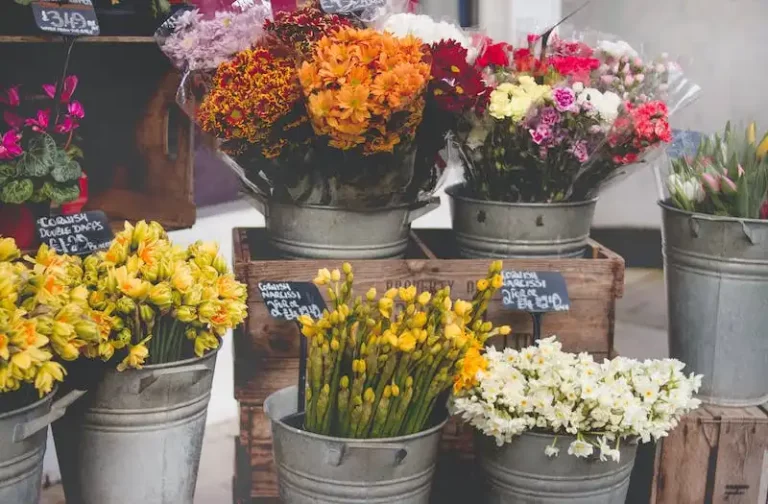Gardenias are beautiful and fragrant plants that can brighten up any indoor space. For those who love the smell of fresh flowers, growing gardenias indoors is a great option. However, many people are hesitant about buying a gardenia houseplant because they think it’s difficult to take care of. Fortunately, with the right knowledge and care, you can still enjoy the beauty and fragrance of gardenias indoors.
One of the reasons why gardenias are so popular as houseplants is because they have large, glossy leaves and beautiful, white floral blooms. These plants are often associated with warm weather and the scents of summer. However, gardenias can thrive indoors as long as they receive adequate light. It’s important to place your gardenia plant near a window where it can get bright, indirect sunlight for several hours each day.
In order to maintain a healthy gardenia houseplant, it’s important to water it thoroughly. Gardenias prefer soil that is acidic and warm, but not soggy. It’s best to water your gardenia when the top inch of the soil feels dry to the touch. This helps prevent overwatering, which can lead to root rot and cause the plant to die.
Another way to care for your gardenia is by feeding it regularly. Gardenias are heavy feeders and require regular fertilization. You can use a fertilizer that is specifically formulated for gardenias or use a general-purpose fertilizer that is high in nitrogen. It’s important to follow the instructions on the fertilizer package and not to overfeed your gardenia, as this can cause leaf burn.
When it comes to pests, gardenias are susceptible to mealybugs and aphids. These pests can be easily identified by the white cottony or sticky residue they leave behind. To get rid of these pests, you can use a mild insecticidal soap or spray the plant with a mixture of water and dish soap. It’s important to thoroughly clean all the leaves and stems to ensure that the pests are completely gone.
Repotting is another important aspect of caring for your gardenia. Gardenias prefer to be slightly root-bound, so you should only repot your plant when absolutely necessary. When repotting, make sure to use a well-draining potting mix and a pot that is slightly larger than the current one. This will help prevent overwatering and promote healthy root growth.
In conclusion, growing gardenias indoors can be a rewarding experience for any plant lover. By providing your gardenia with the right amount of light, water, and nutrients, you can enjoy the beauty and fragrance of these wonderful plants all year round. Just remember to be mindful of the plant’s specific needs and take proper care to ensure its health and longevity.
Gardenia Indoors Gardenia jasminoides
Gardenia jasminoides, commonly known as gardenia, is a beautiful and fragrant flowering shrub that can be grown indoors. With its dark green leaves and white, aromatic flowers, it is a popular choice for houseplants.
When growing gardenias indoors, it is important to provide them with the right conditions to thrive. They need bright, indirect light, preferably in a location where they will receive morning sun. Avoid placing them near heating vents or drafts, as this can cause the leaves to drop.
One of the key factors in successfully growing gardenias indoors is the soil. They prefer a well-draining potting mix that is slightly acidic, with a pH level of around 5.0 to 6.0. Adding organic matter, such as peat moss or compost, to the soil can help improve drainage and provide essential nutrients.
Watering is another crucial aspect of caring for indoor gardenias. The soil should be kept evenly moist, but not waterlogged. Water thoroughly once the top inch of soil feels dry to the touch. Using room temperature water helps prevent shock and promotes healthier growth.
Fertilizing gardenias with a slow-release fertilizer formulated for acid-loving plants can help provide the nutrients they need to bloom. Follow the instructions on the fertilizer package for best results. It is recommended to fertilize gardenias about every two to four weeks during the growing season, which is typically spring to fall.
Gardenias are prone to certain pests, such as aphids and whiteflies, so it is important to regularly check for signs of infestation. If you notice any bugs, treat the plant with an appropriate insecticidal soap or oil. Additionally, keeping the foliage dry and providing good air circulation can help deter pests.
When it comes to propagating gardenias, there are a few methods you can try. One option is to take stem cuttings and root them in a rooting hormone. Another method is to layer the branches, where you bend a branch down to the soil and secure it in place until it roots. Both methods can be successful with some patience and care.
Repotting gardenias should be done when the plant outgrows its current pot or when the soil becomes compacted. Use a well-draining potting mix and choose a pot that is one size larger than the current one. Be careful not to damage the roots when repotting.
It is worth noting that gardenias are known for being somewhat finicky and temperamental. They can be sensitive to changes in temperature or humidity, and their buds may drop if conditions are not ideal. However, with the right care and attention, you can enjoy the beauty and fragrance of gardenias indoors.
Gardenia Houseplants Tips For Growing Gardenias Indoors
Gardenias are beautiful houseplants that are considered to be one of the most popular flowering plants to grow indoors. If you’re considering adding gardenias to your home, there are a few tips that can help you successfully care for them.
First, it’s important to find the right place for your gardenia. These plants prefer bright, indirect sunlight, so choose a spot in your home where they can get at least 4-6 hours of sunlight each day. Placing them near a south or west-facing window is ideal.
To keep your gardenias happy, it’s important to maintain a moderate level of humidity. You can do this by placing a tray of water with gravel underneath the pot to increase humidity levels. Additionally, misting the leaves with water can also help to maintain humidity.
When it comes to watering your gardenias, make sure to keep the soil evenly moist. These plants prefer slightly acidic soil with a pH level of 5.0-6.5. You can use a soil pH testing kit to check the acidity of your soil and make adjustments if needed. Avoid overwatering, as gardenias are susceptible to root rot.
If your gardenia starts to lose its blooms and leaves, pruning can help to rejuvenate the plant. Prune any dead or dying branches, as well as any branches that have become leggy or overcrowded. Use sharp, clean pruning shears to make clean cuts.
Gardenias can also benefit from regular feeding with a slow-release fertilizer. Be sure to follow the instructions on the fertilizer package and only use the recommended amount. Fertilize your gardenias every 2-4 weeks during the growing season.
When it comes to repotting your gardenias, it’s best to do so in early spring. Choose a pot that is slightly larger than the current one and use a well-draining potting mix. Transferring your gardenia to a new pot allows it to continue growing and prevents the roots from becoming too crowded.
Like many houseplants, gardenias are susceptible to common pests such as aphids and whiteflies. To keep these pests away, you can use organic solutions such as neem oil or insecticidal soap. Apply the solution to the affected areas of the plant and repeat as necessary.
In conclusion, gardenias can be a beautiful addition to your indoor space. By providing them with the right amount of sunlight, humidity, and care, you can ensure that your gardenias stay healthy and continue to produce stunning blooms.
Gardenia Houseplants
Gardenias are beautiful and fragrant houseplants that are a favorite among many gardeners. With their glossy, dark green leaves and white, delicate flowers, they add a touch of elegance to any home. However, growing gardenias indoors can be a bit challenging, as they have specific care needs and can be prone to diseases.
When it comes to caring for gardenia houseplants, one of the most important factors to consider is the location. Gardenias prefer a warm and humid spot in the home, where temperatures range from 65 to 70 degrees Fahrenheit during the day and no lower than 60 degrees Fahrenheit at night. They also need bright, indirect light, so placing them near a window that receives morning sun is ideal.
The soil for gardenias should be a well-draining and slightly acidic mix. Many gardeners prefer using a mix of equal parts potting soil, peat moss, and perlite. It’s important to note that gardenias are sensitive to changes in soil moisture, so it’s best to water them thoroughly, allowing the soil to dry out a bit between watering. However, they also need high humidity levels, so misting the leaves daily or using a humidifier nearby can help maintain the right moisture levels.
When it comes to fertilizing gardenia houseplants, a balanced liquid fertilizer with equal amounts of nitrogen, phosphorus, and potassium is recommended. Apply the fertilizer according to the instructions, usually every two to three weeks during the growing season. However, be careful not to over-fertilize, as this can lead to salt buildup in the soil and cause leaf burn. Prune gardenias after they finish blooming to maintain their shape and encourage new growth.
Gardenias can be prone to certain diseases, such as leaf spot, root rot, and wilt. To prevent these issues, provide good air circulation around the plants and avoid overwatering. If you notice any yellowing or brown spots on the leaves, it may be a sign of a problem. In such cases, it’s best to take action immediately and treat the plants accordingly.
In conclusion, gardenia houseplants are a beautiful addition to any home, but they require special care and attention. By providing them with the right growing conditions, proper watering, and regular fertilization, you can enjoy their fragrant blooms throughout the year. Remember to monitor for any signs of diseases or issues and address them promptly to keep your gardenias healthy and thriving.



